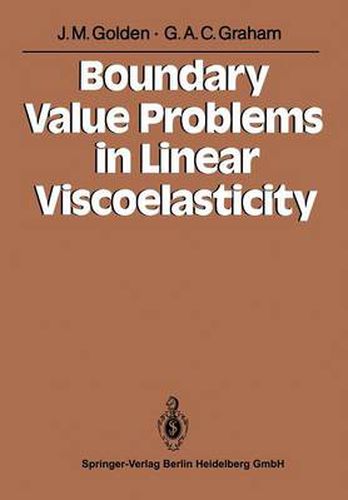Readings Newsletter
Become a Readings Member to make your shopping experience even easier.
Sign in or sign up for free!
You’re not far away from qualifying for FREE standard shipping within Australia
You’ve qualified for FREE standard shipping within Australia
The cart is loading…






This title is printed to order. This book may have been self-published. If so, we cannot guarantee the quality of the content. In the main most books will have gone through the editing process however some may not. We therefore suggest that you be aware of this before ordering this book. If in doubt check either the author or publisher’s details as we are unable to accept any returns unless they are faulty. Please contact us if you have any questions.
The classical theories of Linear Elasticity and Newtonian Fluids, though trium phantly elegant as mathematical structures, do not adequately describe the defor mation and flow of most real materials. Attempts to characterize the behaviour of real materials under the action of external forces gave rise to the science of Rheology. Early rheological studies isolated the phenomena now labelled as viscoelastic. Weber (1835, 1841), researching the behaviour of silk threats under load, noted an instantaneous extension, followed by a further extension over a long period of time. On removal of the load, the original length was eventually recovered. He also deduced that the phenomena of stress relaxation and damping of vibrations should occur. Later investigators showed that similar effects may be observed in other materials. The German school referred to these as Elastische Nachwirkung or the elastic aftereffect while the British school, including Lord Kelvin, spoke ofthe viscosityofsolids . The universal adoption of the term Viscoelasticity , intended to convey behaviour combining proper ties both of a viscous liquid and an elastic solid, is of recent origin, not being used for example by Love (1934), though Alfrey (1948) uses it in the context of polymers. The earliest attempts at mathematically modelling viscoelastic behaviour were those of Maxwell (1867) (actually in the context of his work on gases; he used this model for calculating the viscosity of a gas) and Meyer (1874).
$9.00 standard shipping within Australia
FREE standard shipping within Australia for orders over $100.00
Express & International shipping calculated at checkout
This title is printed to order. This book may have been self-published. If so, we cannot guarantee the quality of the content. In the main most books will have gone through the editing process however some may not. We therefore suggest that you be aware of this before ordering this book. If in doubt check either the author or publisher’s details as we are unable to accept any returns unless they are faulty. Please contact us if you have any questions.
The classical theories of Linear Elasticity and Newtonian Fluids, though trium phantly elegant as mathematical structures, do not adequately describe the defor mation and flow of most real materials. Attempts to characterize the behaviour of real materials under the action of external forces gave rise to the science of Rheology. Early rheological studies isolated the phenomena now labelled as viscoelastic. Weber (1835, 1841), researching the behaviour of silk threats under load, noted an instantaneous extension, followed by a further extension over a long period of time. On removal of the load, the original length was eventually recovered. He also deduced that the phenomena of stress relaxation and damping of vibrations should occur. Later investigators showed that similar effects may be observed in other materials. The German school referred to these as Elastische Nachwirkung or the elastic aftereffect while the British school, including Lord Kelvin, spoke ofthe viscosityofsolids . The universal adoption of the term Viscoelasticity , intended to convey behaviour combining proper ties both of a viscous liquid and an elastic solid, is of recent origin, not being used for example by Love (1934), though Alfrey (1948) uses it in the context of polymers. The earliest attempts at mathematically modelling viscoelastic behaviour were those of Maxwell (1867) (actually in the context of his work on gases; he used this model for calculating the viscosity of a gas) and Meyer (1874).